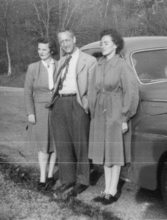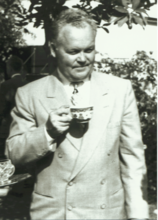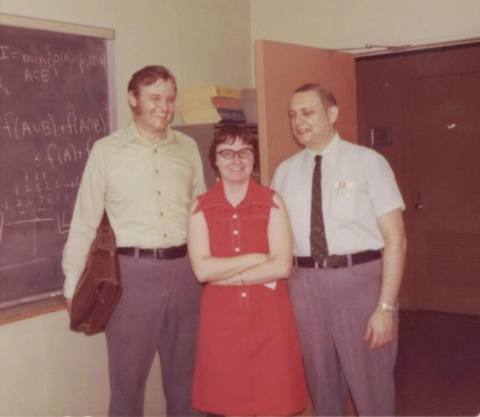Mathematics and Statistics at NIST - A Timeline
1938 - 1946

Prehistory: The Math Tables Project
The Math Tables Project (MTP) of the New Deal’s Works Projects Administration (WPA) helped put people to work by having them serve as (human) computers constructing tables of mathematical functions which were needed for hand computation. The project was located in New York City. Thirty-seven volumes of tables for trigonometric functions, exponentials, logarithms, and so on were produced.
1947 - 1954

Beginnings: The National Applied Mathematics Laboratory
NBS inaugurated its National Applied Mathematics Lab on July 1, 1947, marking the first mathematical and statistical unit on its organization chart. Mathematics and statistics have remained an important part of NIST research to today
1947-1954

INA Pioneers the Field of Numerical Analysis
The NBS Institute for Numerical Analysis helped establish the field of numerical analysis, i.e., the development and analysis of techniques for the solution to complex mathematical problems using computers, as an important new field of study and application
1950

Standards Eastern Automatic Computer
The first fully operational stored-program electronic computer in the United States was built at NBS.
1952

NBS Discovers One of the Century’s Top 10 Algorithms
In 1952 NBS researchers published an algorithm for solving systems of linear equations which would only come to prominence two decades later as a standard method for solving very large sparse systems on supercomputers. It’s impact has been so great that in 1999 one magazine listed it as one of the Top 10 Algorithms of the Century
1957

First Digital Image
The field of image processing was kickstarted at NBS in 1957 when staff member Russell Kirsch created the first ever digital image
1960-1980

Operations Research: Responding to National Needs
NBS mathematicians answered many calls from government agencies, including DOD, IRS, DOT, FAA, and HUD, for help with challenging national problems.
1964

Handbook of Mathematical Functions: Abramowitz and Stegun
Originally conceived as a compendium of mathematical tables for hand computation, the Handbook of Mathematical Functions with Formulas, Graphs, and Mathematical Tables became the most widely distributed and most highly cited NIST publication of all time
1965

First Mathematical Theory of Efficient Combinatorial Algorithms: Jack Edmonds
One of the creators of the fields of combinatorial optimization, polyhedral combinatorics, and computational complexity theory, NIST’s Jack Edmonds helped identify what is perhaps the most sought-after question in computer science research today: Is P=NP
1972

Integral Matrices: Morris Newman
NBS’ Morris Newman was a pioneer in computational number theory, which has deep connections to cryptography.
1999-2022

NIST Micromagnetic Modeling Project Enables Research Advancements Worldwide
Efforts of NIST mathematicians have greatly improved the state-of-the-art in computational modeling of magnetic phenomena at the nanoscale. OOMMF.
2001-2022

Quantum Information Theory
NIST mathematicians and statisticians have made fundamental contributions to the development of techniques to exploit the counter-intuitive properties of quantum mechanics for performing information technology tasks impossible for classical computers.
2010

Digital Library of Mathematical Functions
In 2010, NIST released the Digital Library of Mathematical Functions (DLMF), an online successor to the classic Abramowitz and Stegun Handbook of Mathematical Functions.

